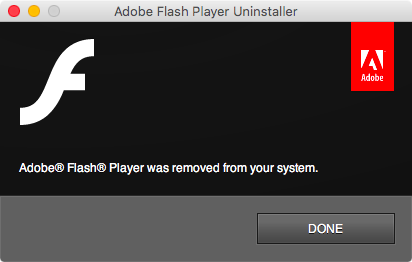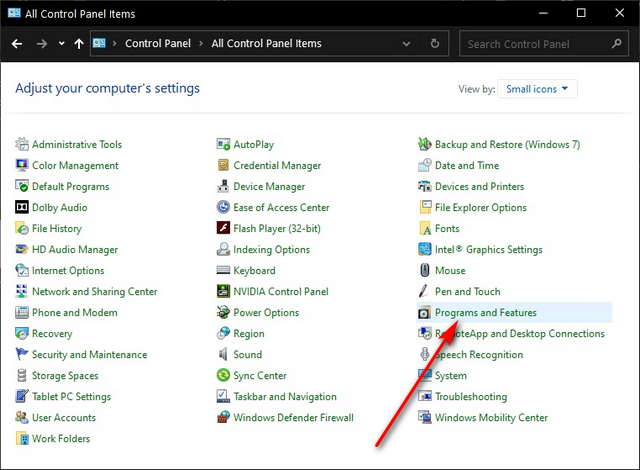

- #SHOULD I UNINSTALL ADOBE FLASH PLAYER FROM MAC HOW TO#
- #SHOULD I UNINSTALL ADOBE FLASH PLAYER FROM MAC FOR MAC OS X#
- #SHOULD I UNINSTALL ADOBE FLASH PLAYER FROM MAC UPDATE#
- #SHOULD I UNINSTALL ADOBE FLASH PLAYER FROM MAC FULL#
- #SHOULD I UNINSTALL ADOBE FLASH PLAYER FROM MAC SOFTWARE#
Part 1: How To Manually Uninstall Adobe Flash on Macįirst up, probably the web could be a better place without Adobe Flash - no emerging vulnerability issues, no Flash based ads and no endless updates.

Part 1: How To Manually Uninstall Adobe Flash on Mac.So if you're looking for a method to uninstall Adobe Flash on your Mac, this is the right place.
#SHOULD I UNINSTALL ADOBE FLASH PLAYER FROM MAC SOFTWARE#
Although Flash was previously a dominant platform for online multimedia content, it is slowly being abandoned as Adobe favors a transition to HTML5 ( Get Best Adobe Uninstaller for Mac).īesides, Adobe Flash has caused many software problems and security issues in the past, with critical vulnerabilities frequently being exposed and Adobe regularly being required to release updates ( What Is Other On Mac Storage).
#SHOULD I UNINSTALL ADOBE FLASH PLAYER FROM MAC UPDATE#
If you receive any emails or see pop-up messages asking you to update Flash Player, do not click on them! It’s a scam.In the early 2000s, Adobe Flash Player was widely installed on desktop computers, and was commonly used to display interactive web pages, online games, and to playback video and audio content.
#SHOULD I UNINSTALL ADOBE FLASH PLAYER FROM MAC FULL#
#SHOULD I UNINSTALL ADOBE FLASH PLAYER FROM MAC FOR MAC OS X#
For Mac OS X version 10.6 and later, click here, and for Mac OS X version 10.4 and 10.5, click here. Download the uninstaller for your Mac version.First, determine your Mac version by clicking on the Apple icon and then About This Mac.If you search for the folders and they don’t exist, it has been removed successfully.Repeat the previous three steps, but open the folders and delete the content of:.In the “open” box, insert C:\Windows\system32\Macromed\Flash and hit “ Enter.”.For the last step, press the Windows key and ‘ R’ to bring up the ‘Run’ command.When complete, you will be asked to restart your computer to complete the process.When prompted for confirmation, click on “ Yes.”.Double-click on the downloaded Uninstaller.Make sure that you have closed all browsers, tabs or apps.For Windows operating system, download the official Uninstaller from Adobe.It is a bit lengthy, but here is how to remove it from a Windows PC: Removing Flash from your systemĪs Adobe advised, you should remove Flash Player from your system - whether you have a Mac or PC. You can check to see if Flash is installed or enabled on your system by clicking here, and clicking on “ Check Now” on that page. “Since Adobe will no longer be supporting Flash Player after December 31, 2020, and Adobe will block Flash content from running in Flash Player beginning January 12, 2021, Adobe strongly recommends all users immediately uninstall Flash Player to help protect their systems,” Adobe said in an informational page about the software. If that didn’t signal the death-knell for Flash, Adobe itself confirmed earlier this month that it would no longer be supporting its own technology. RELATED: Billions of PC users at risk: Adult websites infected with malware The final days of a flawed technology Through a partnership between the creators of CSS, JavaScript and openGL, they created the means to play videos and animations natively in a browser - completely side-stepping the need for Flash. Given the security issues, Jobs didn’t want third-party software to compromise its hardware.Īnother major contributor to Flash’s demise came from the development of HTML5. RELATED: Google, WhatsApp, Flash and other copycat apps are hiding malwareĪpple founder Steve Jobs famously said that the iPhone would never support Flash, and when the first model was released, it didn’t. Adobe seemingly patched the software every other day, with hackers finding new flaws just as fast. The biggest reason for its downfall, however, is that it constantly posed an enormous security risk. The rapid decline in popularity and subsequent non-usage originated through a series of events.


 0 kommentar(er)
0 kommentar(er)
